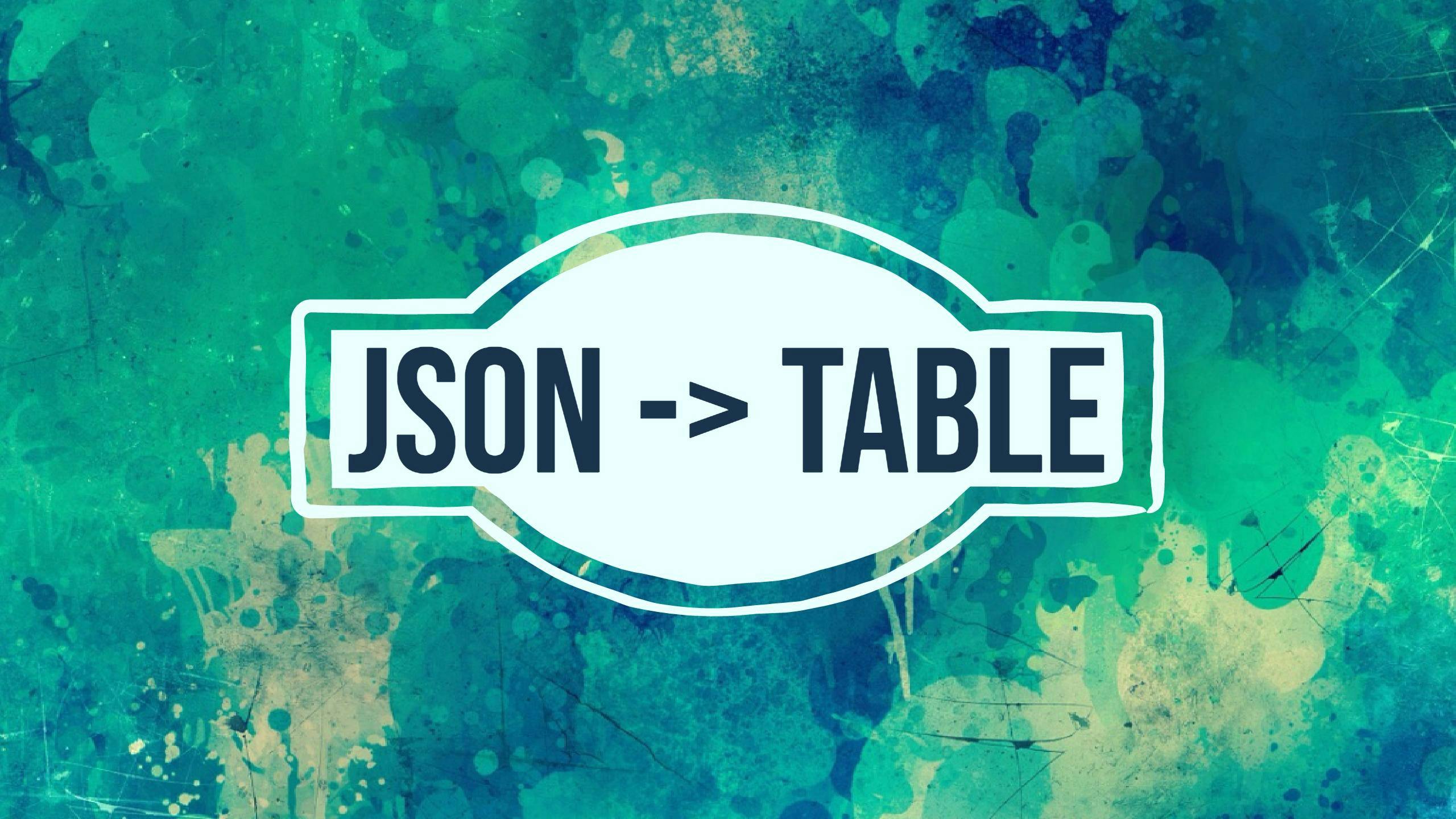Today we’ll build a dependency-free function that accepts…
Data in a JSON array
An optional space-separated list of classes
… then transforms the data and returns a string of HTML representing a table element with the specified classes.

The data passed to this function should be an array of JavaScript objects, each with the same properties. For example:
[
{ country: 'China', population: 1379510000 },
{ country: 'India', population: 1330780000 },
{ country: 'United States', population: 324788000 },
{ country: 'Indonesia', population: 260581000 },
{ country: 'Brazil', population: 206855000 },
];
Notice each object has a country property and a population property.
Our function will be called json2table and accepts a json argument and an optional classes argument.
function json2table(json, classes) {
// Everything goes in here
}
First we’ll set up some variables.
var cols = Object.keys(json[0]);
var headerRow = '';
var bodyRows = '';
We want one table column per property. Since it can be assumed (or error-checked later) that each object has the same properties, the first line above grabs the the property names (keys) from the first object in the array and stores it in a variable called cols. The other two variables are empty strings for now and we’ll build them out in a minute.
Next, we’ll make sure that if no classes argument is passed, that the classes variable contains an empty string. This will be important later when we build the HTML string.
classes = classes || '';
Now I’m going to define a utility function that capitalizes the first letter of a string.
function capitalizeFirstLetter(string) {
return string.charAt(0).toUpperCase() + string.slice(1);
}
This function applies.toUpperCase() to .charAt(0) (the first character), then concatenates that with .slice(1) (the rest of the string).
Next, we loop over the list of keys and create column headers.
cols.map(function(col) {
headerRow += '<th>' + capitalizeFirstLetter(col) + '</th>';
});
Now, theheaderRow variable contains a string of <th> elements.
Next, loop over the array and build a string of HTML table rows.
json.map(function(row) {
bodyRows += '<tr>;
// To do: Loop over object properties and create cells
bodyRows += '</tr>';
}
You can see how each row will begin with <tr> and end with </tr>. Between each of those tags, we need to loop over the object properties and create cells (<td>s). This next part goes inside our loop above.
cols.map(function(colName) {
bodyRows += '<td>' + row[colName] + '<td>';
});
Finally, we just need to return the whole HTML string, including any classes passed to the function.
return '<table class=" +
classes +
'"><thead><tr>' +
headerRow +
'</tr></thead><tbody>' +
bodyRows +
'</tbody></table>';
That’s it! If we pass our example arrow of objects from earlier…
var data= [
{ country: 'China', population: 1379510000 },
{ country: 'India', population: 1330780000 },
{ country: 'United States', population: 324788000 },
{ country: 'Indonesia', population: 260581000 },
{ country: 'Brazil', population: 206855000 },
];
json2table(data);
We get a string of HTML representing a table.
<!-- Formatted for clarity -->
<table class="">
<thead>
<tr>
<th>Country</th>
<th>Population</th>
</tr>
</thead>
<tbody>
<tr>
<td>China</td>
<td>1379510000</td>
</tr>
<tr>
<td>India</td>
<td>1330780000</td>
</tr>
<tr>
<td>United States</td>
<td>324788000</td>
</tr>
<tr>
<td>Indonesia</td>
<td>260581000</td>
</tr>
<tr>
<td>Brazil</td>
<td>206855000</td>
</tr>
</tbody>
</table>
On a webpage, you could place this anywhere by writing something like this:
<!-- HTML -->
<div id="tableGoesHere"></div>
// JavaScript
document.getElementById('tableGoesHere').innerHTML = json2table(data);

